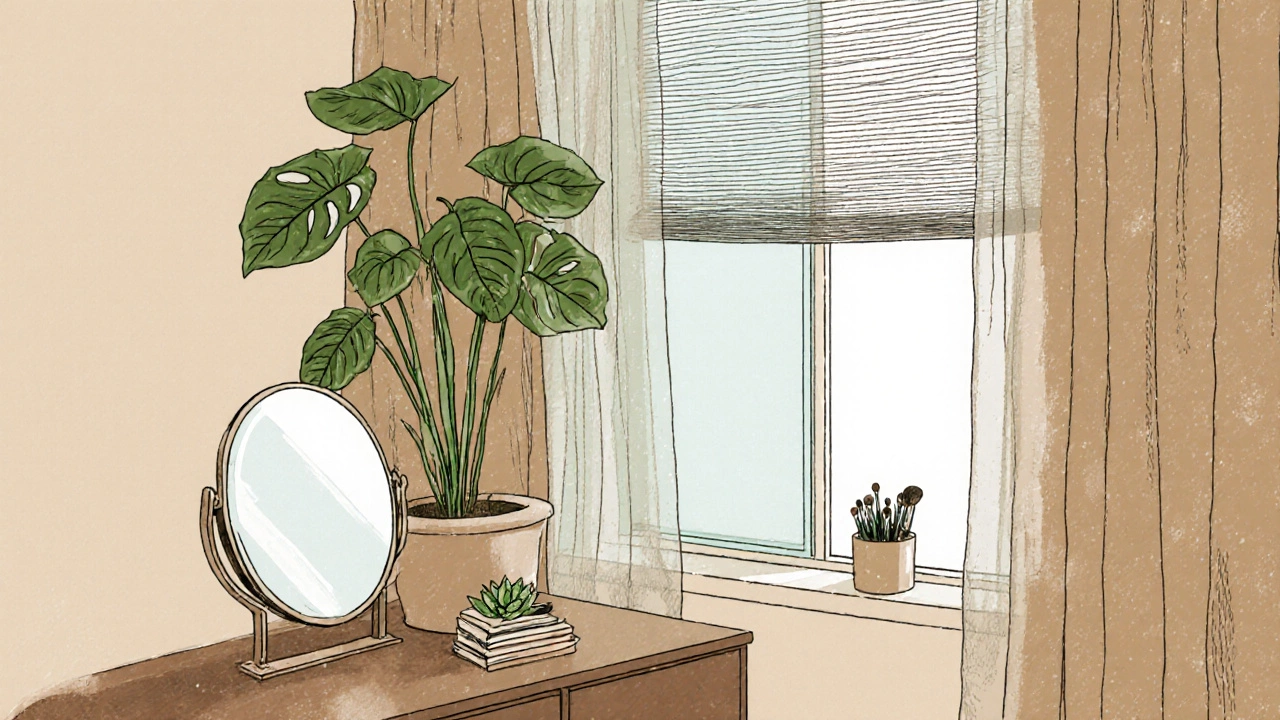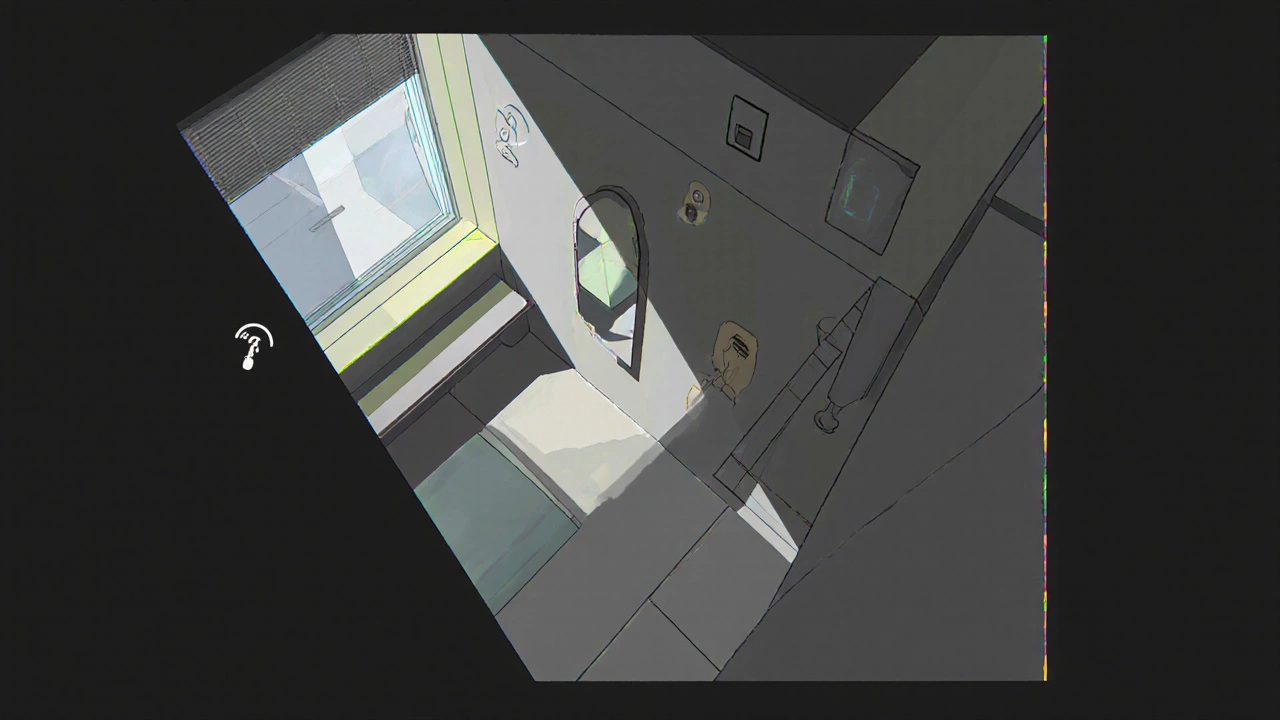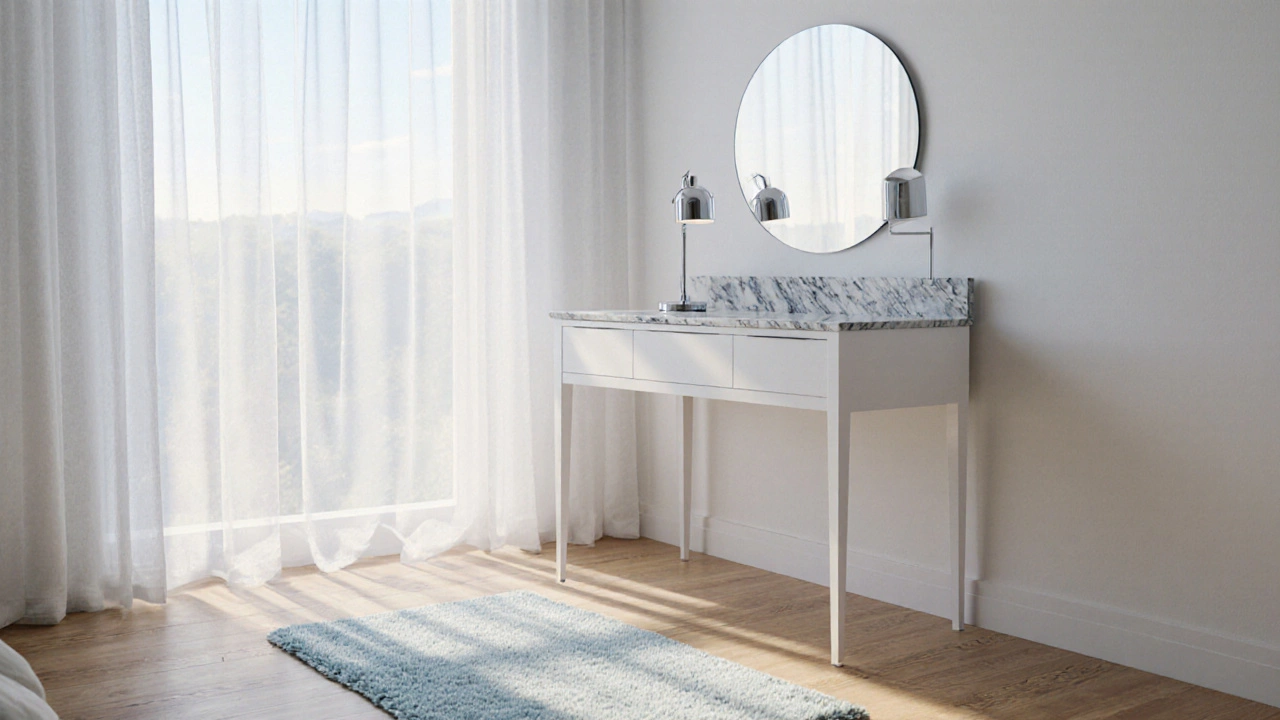Dressing Table Placement Advisor
Answer the following questions to determine if placing your dressing table near the window is ideal for your space.
Your evaluation will appear here after answering the questions.
When you’re arranging a bedroom, the question of whether the dressing table a piece of furniture used for grooming, applying makeup, and storing accessories should face the window an opening in a wall that lets in light and air pops up instantly. The answer hinges on light, privacy, comfort, and the overall flow of the room. Below we break down the practical pros and cons, share tricks to make the set‑up work, and give you a clear plan to decide the best spot for your dressing area.
Why Natural Light Is a Game Changer
Natural light sunlight that streams through windows, providing a full spectrum of illumination reveals true colours, reduces shadows, and makes makeup application easier. When a dressing table faces the window, you get a bright, even glow that mirrors how you’ll look outdoors - ideal for achieving a flawless finish. Studies from lighting research institutes in 2023 show that skin tone perception is up to 30% more accurate under daylight‑balanced light than under typical indoor bulbs.
- Boosts confidence: Seeing yourself in clear light helps spot imperfections early.
- Saves energy: You rely less on artificial lamps during daytime.
- Creates an airy vibe: A sun‑lit dressing corner feels larger and more inviting.
Drawbacks You Can’t Ignore
Facing a window isn’t without challenges. The very factors that make daylight appealing can also create problems.
- Glare intense reflected light that hinders visibility can wash out details, especially when the sun is low in the sky.
- Privacy the state of being unseen by outsiders becomes a concern if the window looks onto a street or neighbour’s garden.
- Temperature the degree of heat or coolness in a space can spike on hot summer days, making the area uncomfortable for long grooming sessions.
These issues often lead people to place the dressing table away from the window, but you don’t have to sacrifice the benefits of daylight entirely.
Mitigating Glare and Heat
Smart window treatments are your first line of defence. Here are practical options:
- Sheer curtains: Let diffused light pass while cutting harsh glare.
- Top‑down blinds: Adjust the upper portion to block direct sun while keeping a view.
- Window film: Low‑emissivity (Low‑E) coatings reflect infrared heat, keeping the room cooler.
Pair these with a mirror a reflective surface used to view oneself during grooming that has an anti‑glare coating. This combination gives you bright, even lighting without the uncomfortable sparkle.

Privacy Solutions That Don't Block Light
If your window looks onto a busy street, consider these tactics:
- Install a frosted glass film that blurs the view from outside while still allowing light through.
- Use vertical blinds set at an angle - they let daylight in but obscure the interior from prying eyes.
- Place a tall, narrow plant (e.g., a fiddle‑leaf fig) on the windowsill to act as a natural screen.
These ideas preserve the airy feel without sacrificing your sense of seclusion.
Layout Guidelines for an Efficient Dressing Zone
Beyond light and privacy, the overall bedroom layout the arrangement of furniture and circulation paths within a sleeping space matters. Follow these rules of thumb:
- Distance from the window: Keep the table at least 12‑18 inches away to avoid heat buildup and to allow space for curtains.
- Angle the surface: A slight tilt (10‑15°) toward the window reduces glare while still catching most daylight.
- Mirror placement: Position the mirror opposite the window (or at a 45° angle) to reflect natural light onto your face.
- Circulation: Ensure there’s a clear pathway of at least 3 feet around the table so you can move freely.
These tweaks make the space functional and aesthetically pleasing.
Alternative Placements When the Window Isn’t Ideal
If the drawbacks outweigh the benefits in your room, consider these options:
- Against a solid wall: Use a decorative wall sconce or LED strip to mimic daylight warmth.
- Adjacent to the wardrobe: Keeps accessories within reach and creates a dedicated dressing nook.
- Corner vanity: Maximizes floor space and allows a small floor lamp to provide focused illumination.
In each scenario, supplement with a lighting artificial light sources such as LED or daylight‑balanced bulbs fixture that offers a colour temperature of 5000‑5500K for the most natural look.

Quick Reference: Pros vs. Cons
| Aspect | Pros | Cons |
|---|---|---|
| Light Quality | Bright, true‑colour illumination; reduces need for extra lamps | Potential glare during sunrise/sunset |
| Room Feel | Creates an open, airy ambience | May feel exposed if privacy is low |
| Energy Use | Lower electricity consumption in daylight hours | Heat gain can raise cooling costs in summer |
| Design Flexibility | Easy to pair with mirrors and light‑diffusing curtains | Requires careful treatment selection to avoid visual clutter |
Checklist for Perfect dressing table placement
- Is the window orientation north‑facing (soft light) or south‑facing (strong light)? Choose treatment accordingly.
- Do you have adequate curtains or blinds to control glare and privacy?
- Is the table at least a foot away from the glass to prevent heat buildup?
- Is a mirror positioned to catch reflected daylight without causing glare?
- Are there clear pathways (minimum 3ft) around the table for comfortable movement?
Frequently Asked Questions
Will a dressing table near a window get too hot in summer?
Heat can build up if the window receives direct sun for several hours. Using reflective window film, low‑E glass, or blackout curtains during the hottest part of the day keeps the surface comfortable. Adding a small ceiling fan nearby also helps.
How do I reduce glare without sacrificing natural light?
Install sheer curtains or top‑down blinds that filter direct sunlight while letting diffused light in. Position the mirror at a 45° angle to bounce soft light onto your face, which reduces harsh shadows.
Is it okay to place a full‑length mirror opposite the window?
Yes. A full‑length mirror opposite the window reflects daylight, providing even illumination across the entire body - perfect for checking outfits and posture.
What colour temperature should my artificial lighting match?
Aim for 5000‑5500K, which mimics natural daylight. This matches the colour rendering of daylight coming through the window and helps you see true colours.
Can a small bedroom still benefit from a window‑facing dressing table?
Absolutely. Even a compact vanity gains from daylight. Use a slim, wall‑mounted table and keep window treatments minimal to preserve floor space while enjoying natural light.
Ultimately, the decision rests on how you balance light, privacy, and comfort. With the right window treatments, mirror positioning, and layout tweaks, a dressing table facing the window can become the brightest, most functional corner of your bedroom.


